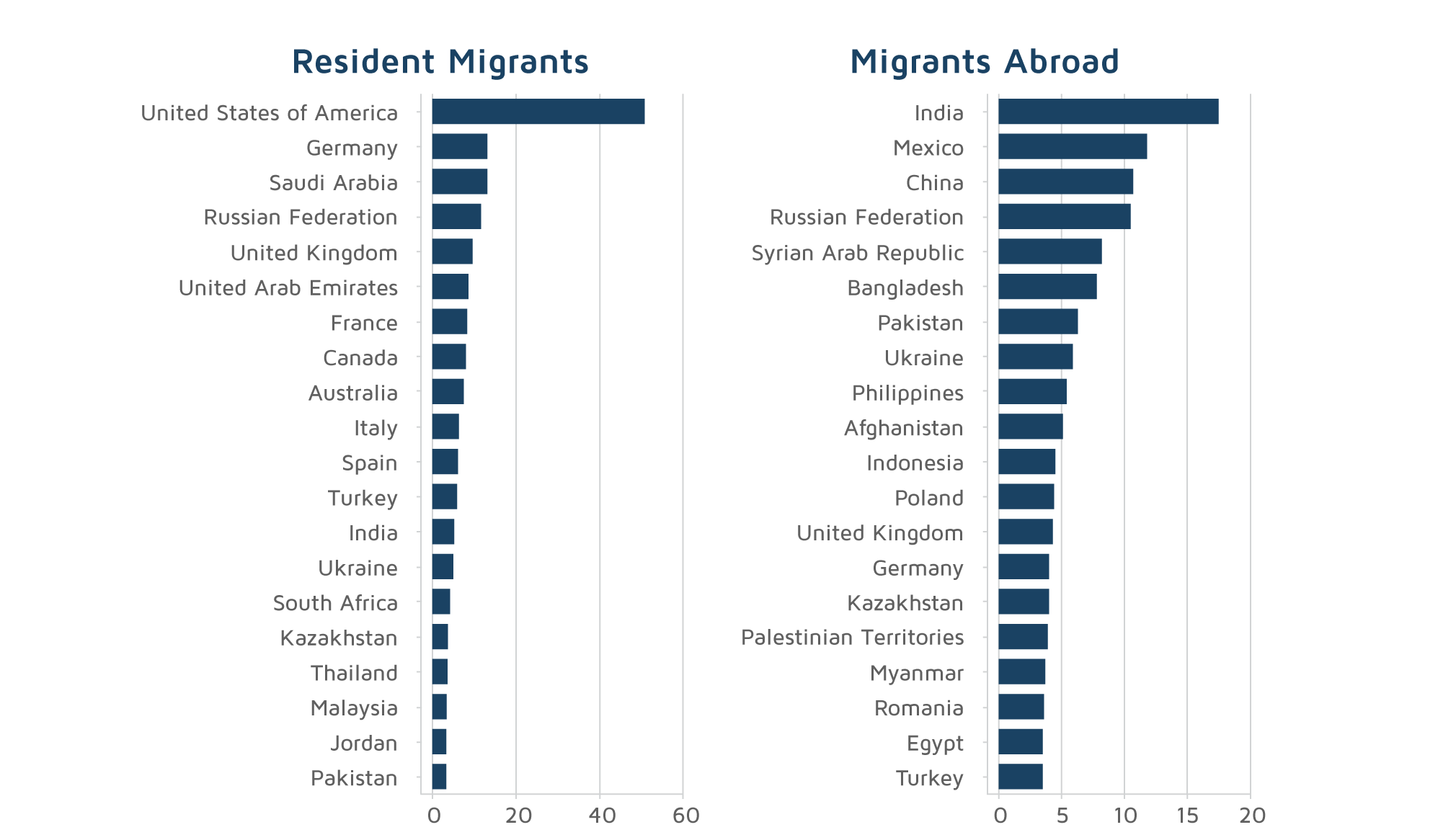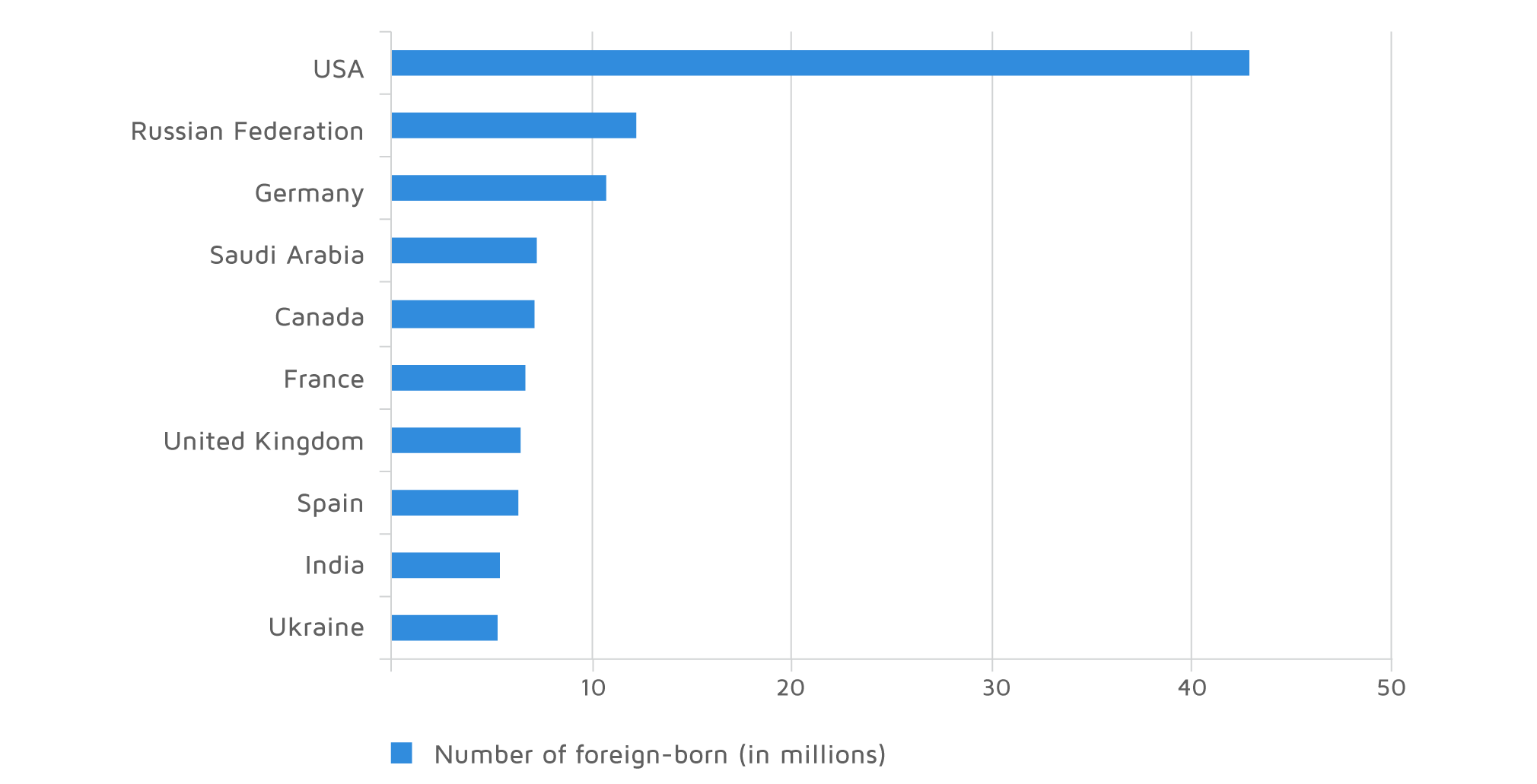The number of international migrants has more than tripled since 1970 according to the International Organization for Migration. However, the countries of destination targeted by migrants have changed over time with the United States of America and Germany having been selected over the last few decades.
The International Organization for Migration (IOM) reports that the number of international migrants reached 281 million in 2020 compared to 84 million in 1970. At the same time, however, the agency states that if the global population growth is taken into account, the proportion of international migrants has only grown from 2.3% to 3.6% of the total population. Overall, 96.4% people worldwide reside in their countries of origin.
In general, 61% of the global international migrants moved to Europe and Asia in 2020 with these continents hosting around 87 and 86 million international migrants respectively. These two regions are followed by North America with 59 million international migrants in 2020, representing 21% of the total number of migrants. In 2020, Africa, Latin America, and Oceania hosted 9%, 5%, and 3% of the total migrants respectively.
However, compared to the size of the population, the largest numbers of international migrants in 2020 were hosted by Oceania, North America, and Europe with international migrants representing 22%, 16%, and 12% of the total population in those regions. The share of international migrants in other regions such as Asia and Africa is smaller with only 1.8% and 1.9% respectively. From 2000 to 2020 Asia, however, experienced remarkable migration growth.
Fig.1. Number of International Migrants
Targeted countries
Overall, in 2019, about two-thirds of total international migrants, almost 176 million people, lived in high-income countries compared to 82 million individuals, about one-third of the total migrants, living in middle-income countries. Only 13 million migrants resided in low-income countries in 2019.
The United States of America has led the list of countries of destination for international migrants since 1970. The number of foreign-born people living in the US reached 51 million in 2019 compared to 12 million in 1970. Germany is the second top destination as its foreign-born population exceeded 13 million migrants in 2019, up from 10 million in 2015.
In terms of the largest migrant origin countries and regions in 2019, Asia led this list, accounting for 40% of total international migrants with 112 million people overall being born in the region. Most emigration occurred in countries such as India, China, Bangladesh, Pakistan, and Afghanistan. Globally, the second-largest country of origin is Mexico followed by the Russian Federation.
Fig.2. Top 20 destinations (left) and origins (right) of international migrants in 2019 (millions)

Evolution of migrants’ preferences
For comparison, according to a report published by IOM in 2000, in addition to the United States, the country that was the largest recipient of international migrants, other significant host countries at that time were India, Pakistan, France, Germany, Canada, Saudi Arabia, Australia, the United Kingdom and the Islamic Republic of Iran. In 2010, IOM said the list of countries hosting the largest share of the foreign-born population was topped by the USA followed by the Russian Federation and Germany. The evolutions show that some countries, for instance, the USA, Germany, France, and the UK, have been selected as final destinations by international migrants over the last few decades.
Fig.3. Countries with the largest foreign-born populations in 2010 (in millions)


